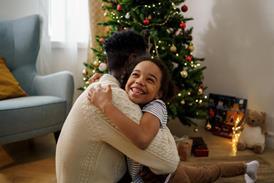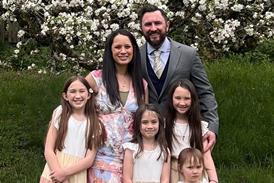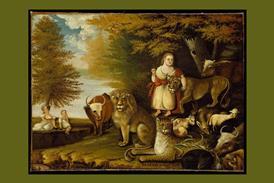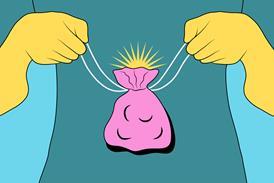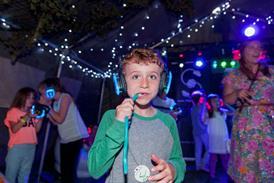Lisa Skinner finds that participating constructively in Halloween presents lots of opportunities to engage with friends, neighbours and the wider local community
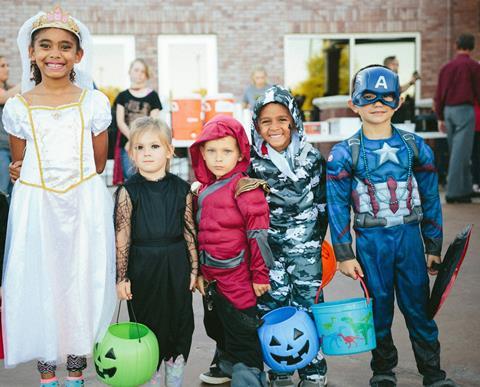
For an alternative view see here.
Halloween was never much of a tradition in my family, but my godly grandmother always found ways to mark the autumn season with us. She would gather her grandchildren together for homemade apple pie, with coins wrapped in greaseproof paper tucked inside, and organise apple-bobbing, where we’d discover yet more coins hidden in the fruit. It was a financially lucrative event for us as kids. Although we weren’t allowed to “celebrate” Halloween in the usual way, my grandmother came up with wholesome alternatives that still made us feel part of the fun. Thankfully for us, in those pre-Google days, she never caught wind of the rumour that apple-bobbing had its roots in the Roman worship of Pomona (the goddess of fruit and trees).
As a child, in my family, any association with Halloween was discouraged, so trick-or-treating was off the table
The festival of Halloween finds its roots in the ancient Celtic festival of Samhain, celebrated over 2,000 years ago. The Celts believed it was a time when the boundary between the living and the spirit world grew thin. As the Roman empire expanded across Europe and Christianity spread into Celtic lands, these traditions, and beliefs gradually blended. In time, the Christian observance of All Saints’ Day, or “All Hallows,” emerged, with the evening before known as All Hallows’ Eve, eventually shortened to Halloween.
The tradition of trick-or-treating only became part of the festivities in the 16th Century, when people would go from door-to-door, offering prayers or songs in exchange for food. This custom, known as souling, took place on All Saints’ Day, when Christians prayed for the souls of the departed. By the Victorian era, the offering often given was a simple pastry known as a soul cake, a type of biscuit/small cake. This gradually evolved into sweets and chocolate.
When I became a parent myself, I began to wonder if there might be a way to redeem the best parts of the traditions and reshape them into practices that celebrate the light over the darkness
While Halloween has been a highly commercialised occasion in the United States for a long time, in recent years the UK has embraced it too. Now, on All Hallows’ Eve, it is common practice for our neighbourhoods to come alive with children in costumes, rapping on doors to trick-or-treat the residents.
As a child, in my family, any association with Halloween was discouraged, so trick-or-treating was off the table. Watching E.T. always gave me a serious case of FOMO, but I could only watch from my window as friends dressed up and roamed the streets to gather sweets, often collecting enough to last them right through until Christmas.
When I became a parent myself, I began to wonder if there might be a way to redeem the best parts of the traditions and reshape them into practices that celebrate the light over the darkness. We decided if we were to mark that time of year, we would set some ground rules: there would be no scary or sinister costumes, everything would be light-hearted and fun. The same rule applied to us as parents, so we too dress in costume, sometimes complementing our kids’ costume choices and accompany them around our local area. We are there to have fun with our children while making sure they are safe and encouraging them to be polite as they accept whatever treats are offered.
Over time, we’ve discovered that Halloween brings with it a wonderful sense of community
Over time, we’ve discovered that Halloween brings with it a wonderful sense of community. Families from around our neighbourhood take to the streets, and it has become a tradition to walk together. Along the way, we meet people we rarely get the chance to talk to, many of our older neighbours open their doors to admire the children’s costumes and share a chat, and there are always a few requests for a rendition of “Halloween is coming, and the goose is getting fat…”. Each year, as we wander around our area, we are met with generosity and kindness, a reminder of the hospitality woven into our streets.
We have other Christian friends who also approach Halloween a little differently. Instead of going out to collect treats, they turn the tradition on its head — Treat-and-Treat as it were, offering something to those who answer the door. Sometimes it’s a small gift or sweet, and occasionally they include a piece of Christian literature to share their faith in a gentle way.
instead of viewing Halloween as something to fear, and which we must shield our children from, maybe we could see it as a chance to share light and love
Just today I noticed a Christian online sharing their “Fall-o-ween Jesus” idea for this time of year. They had made up Fall for Jesus bags to hand out, including sweets, a bracelet that says “Jesus loves you” and a prayer card. The woman behind it said, “My hope is that it plants a seed, maybe tiny, maybe simple but still a seed of truth. Because even on a night the world calls dark, the light of Jesus can shine the brightest.”
Lots of churches have got creative around this festival, with some hosting Harvest/Light parties or even doing a Trunk-or-Treat by decorating a car boot and allowing kids to get sweets from a central location, rather than going door-to-door. There are lots of ways to repurpose this festival. So, instead of viewing Halloween as something to fear, and which we must shield our children from, maybe we could see it as a chance to share light and love.
Read more:
10 ways Christian parents can provide an alternative Halloween for children with additional needs
Navigating Halloween with kids through chocolate, conversation and Jesus
How Christian families can help shine a light this Halloween
At a time when loneliness is so widespread, the continual knocking at the door and the sound of children laughing might just bring moments of warmth and connection to someone’s evening. Of course, not everyone wishes to be disturbed on a dark October night, and that’s respected too. In our streets, there’s an unspoken rule: a lit pumpkin outside signals visitors are welcome, those without prefer not to take part and both choices are respected.
The Bible reminds us not to conform to this world (Romans 12:2), that means we won’t always assimilate to the culture around us. But we’re also called to engage with culture so that we can point others to Christ (1 Corinthians 9:22). Could Halloween be an opportunity to do just that?
For an alternative view see here.


